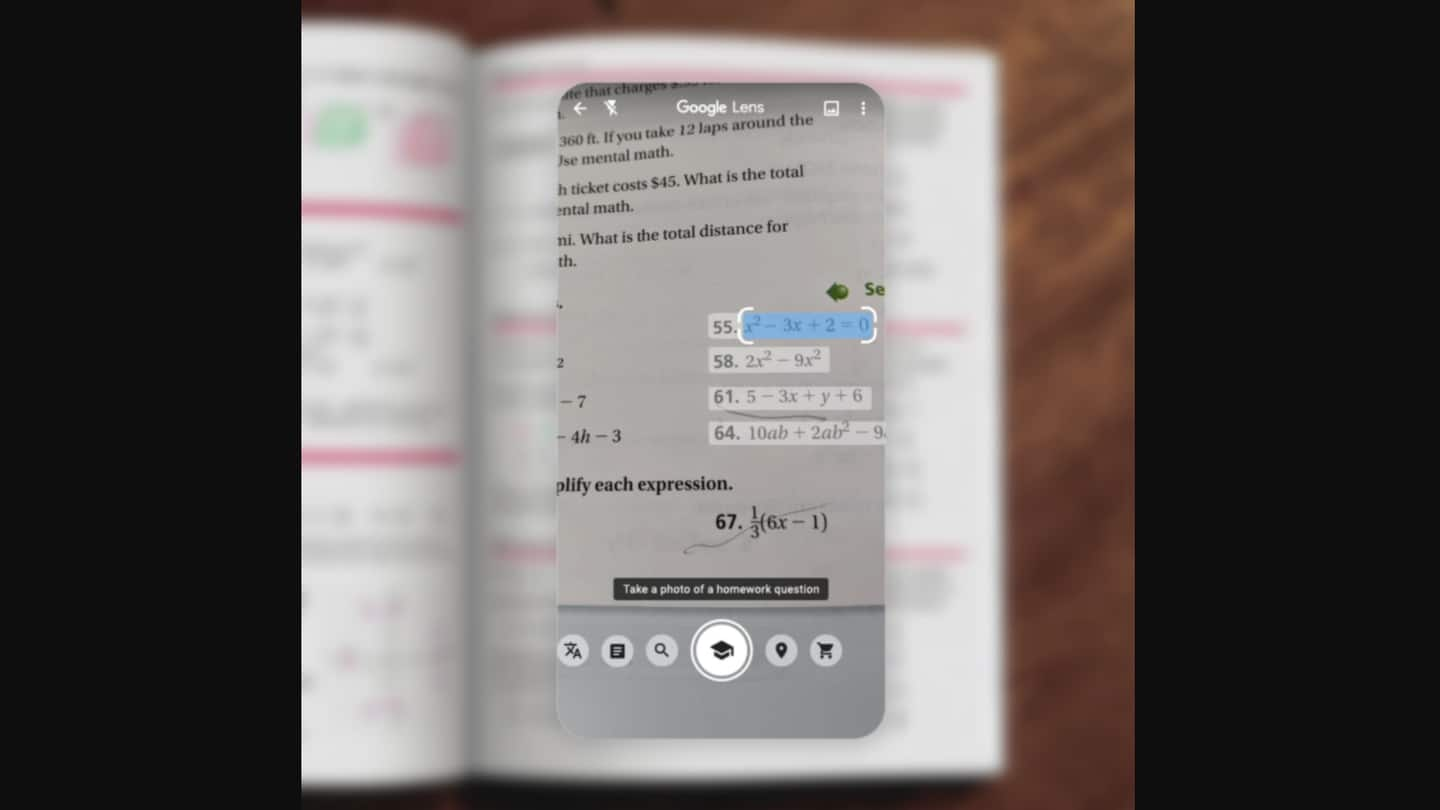
Now, Google will help you with Math problems: Here's how
What's the story
In the wake of COVID-19, millions of kids have been asked to switch to the routine of online 'virtual' classes and studying from home.
It is a major shift from the conventional notion of schooling and has left many young learners struggling with their classwork/homework.
Now, realizing this problem, Google is offering some assistance through its Lens image recognition tool.
Here's how.
Lens
First, what is Google Lens?
Announced at I/O 2017, Google Lens is a camera-based scanner that provides relevant information by analyzing photos of real-life objects through a neural network.
The technology has been updated over the years to perform a range of functions, including things like virtual on-screen translation of a text, copying of real-world text to a computer, and detecting the name and details of objects and places.
Ability
New 'homework' filter to solve problems
Now, in light of the current crisis, Google has added a 'Homework' filter into Lens to help with Math problems.
Using this tool, you (or your child) can scan a math equation/problem and have it directly solved.
Lens recognizes the problem almost instantly and offers a solution, along with step-by-step instructions to help you understand how to solve correctly the next time.
Benefit
Plus, it also shows key concepts for understanding
In addition to offering solutions, Lens will also show key concepts, similar problems, and related videos to help you fully understand the topic and how to handle other, more difficult problems around it.
Further, if you are stuck on some other subject's question, scanning with the filter will produce a Knowledge Panel card showing graphics and explanations for that particular topic.
Other improvements
AR models being added to Google Search
Beyond this, Google is bringing 3D models of "nearly 100 STEM concepts" for students of Biology, Chemistry, and other sciences.
These models will appear directly through Google Search on compatible Android and iOS devices, with students getting options to view the 3D model up close as well as bring it into their space using augmented reality (AR).